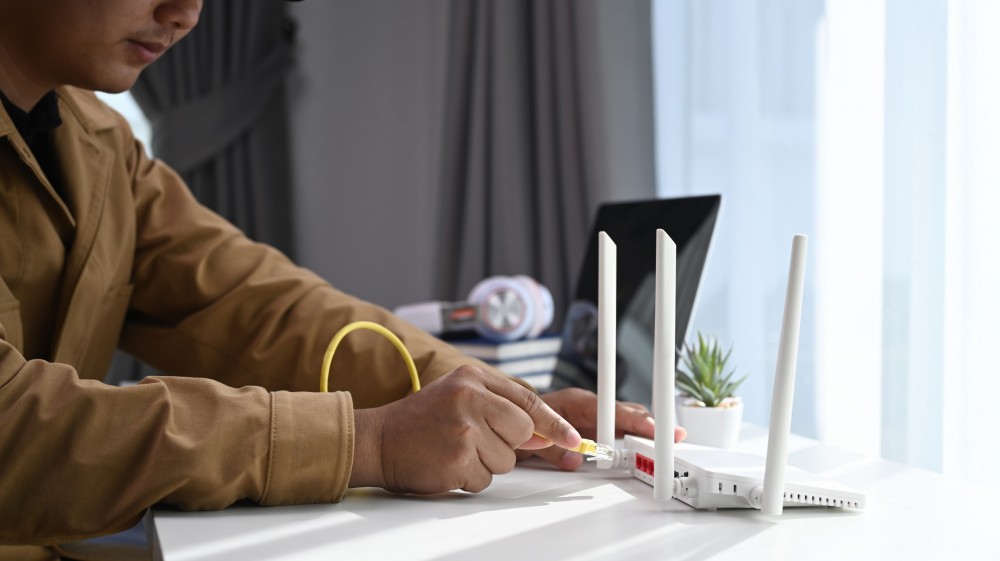Top tips for managing broadband when moving house
Home - HELP & ADVICE - Blog - Top tips for managing broadband when moving house
Home - HELP & ADVICE - Blog - Top tips for managing broadband when moving house
Planning on moving home in the near future? Wondering how to coordinate the moving services with your broadband so you’re not left without internet? You’re not alone!
With broadband now being viewed as essential as electricity and heating, managing a house move without being without connectivity can be a challenge.
These tips are designed to help with that.
We have collated some useful, actionable tips you can use the next time you’re moving house and want to stay connected.
There are a few things you can do to help the process of moving house before you begin packing.

Once you know where you’re going to live, perform a postcode check to see what broadband speeds and packages are available at your new address.
You can run a speed test to check them against what you’re getting now and see whether you can go faster, cheaper or both.
Also check whether your current provider offers services in your new area as you’ll need this information later.
Coverage varies depending on who your current provider is. Virgin Media has its own network and covers only a portion of the country. BT Openreach has a wider service area and should provide connections almost anywhere in the country.
Hull has its own network (KCOM), so if you’re moving to or from Hull and surrounding areas, you may find your options are slightly different.
Depending on whether your current provider offers services at your new address, you now have two options.
You can stay with your current provider and have them move the connection or start a new broadband contract at your new address.
If you’re in the middle of a fixed term contract or your current provider offers the best deal at your new address, moving with them might be your preferred option.
You will need to contact them to arrange the move at least 30 days in advance of your moving date. Some providers can work with 14 days’ notice but the more the better.
Some providers don’t need that long but the sooner you book the move, the more likely you are to be able to choose the day and time.
If your current provider doesn’t provide broadband at your new address, you can negotiate with them to let you out of your contract early. Some will do this for free, others will not.
Occasionally, a provider may charge an early cancellation fee for leaving your contract early. This is usually negotiable, especially if they don’t operate at your new address.
If you’re at the end of your current contract, your provider doesn’t operate in the new area or they cannot compete with other deals, switching is simple.
Identify the fastest or cheapest provider using the postcode checker. Contact your chosen provider and book installation for a convenient date as close as possible to your moving-in day.
Tell your new provider where and when and they coordinate with your current provider, assess whether an engineer is required or just send a new router through the post.
You should still give your current broadband provider formal notice though. Give them a minimum of 30 days’ notice so you’re not faced with any charges.

Whether you’re moving your current contract or getting a new one, scheduling is roughly the same.
Decide whether to have the broadband installed on moving day or a day or two after. We recommend the latter, just in case of any delays getting the keys.
Plus, nobody wants to have to climb over an installation engineer while carrying heavy furniture!
The provider will check their records to assess whether any engineering work is required. If there is, they will perform the work on their network before the date and any necessary work on your property on the date you arrange.
That work can include drilling a new phone or cable line through a wall or something similarly intrusive. If you’re moving into rented accommodation, make sure you have permission in writing from the landlord or letting agency.
Having an agreement in place beforehand covers you from any potential issues later on.
The vast majority of houses within towns and cities will already have a phone line or cable connection. If not, the installation is relatively simple: a hole drilled into the wall to pass cable through and a wall box mounted inside to keep everything tidy.
Installation should take around an hour unless there are any complications.
Once your connection is live, you can go about setting up your broadband.
Some installers will set up your router for you while others won’t. Either way, getting online is easy.
In an ideal situation, you would place your router in the centre of the home for the best WiFi connection. That won’t always be possible because of the wall connection, so place it as close as you can.
If you have areas where there isn’t a good WiFi signal, you can use signal boosters or powerline adapters to provide connectivity.
These are both simple, cost-effective ways of expanding wireless networks within a home and can work very well indeed!
If you plan to renovate your home in the future, ask the builder or electrician to run Ethernet cables around your home. That’s the best way to enjoy fast broadband!